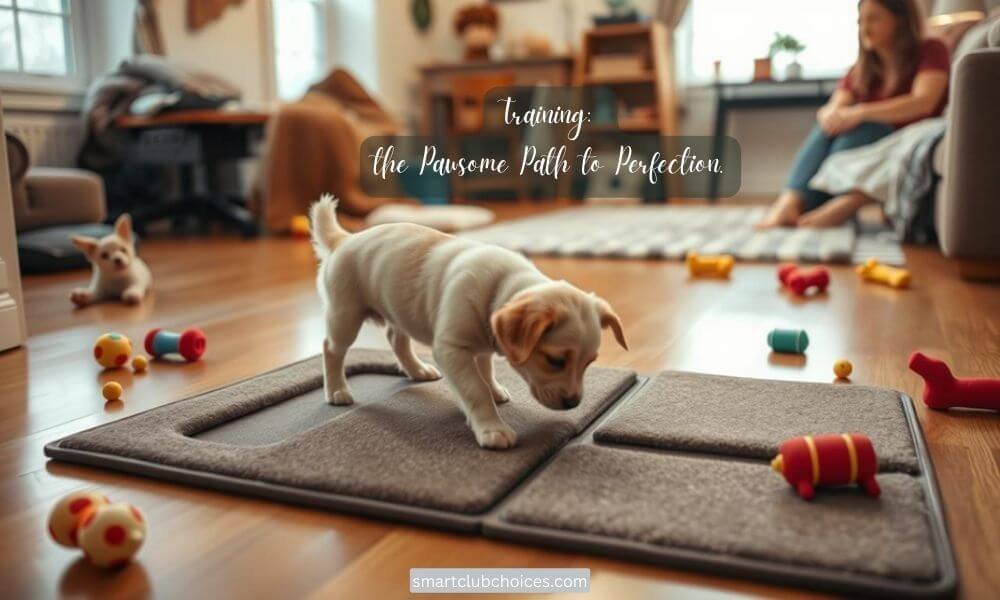Dog Training Tips for Beginners
Training your dog is one of the most rewarding parts of pet ownership. It’s not just about teaching them tricks but building a foundation of communication, trust, and companionship.
Whether you’ve just brought home a new puppy or adopted an older dog, training is essential for helping them adapt to their environment and ensuring a harmonious relationship between you and your furry friend.
For beginners, the process can seem daunting. But with patience, consistency, and the right techniques, training your dog can be a fun and productive experience.
In this guide, we’ll cover essential tips to help you get started on the right foot.
Table of Contents
(1) Start With the Basics
Before diving into complex commands, it’s essential to begin with the fundamental obedience commands that every dog should know. These include:
- Sit: A basic command that helps control your dog in various situations.
- Stay: This teaches your dog to remain in place, which is useful in many scenarios.
- Come: This is vital for recall, ensuring your dog returns to you when called.
- Leave It: This command helps your dog avoid potentially dangerous or undesirable items.
When starting, focus on one command at a time and make sure your dog fully understands it before moving on.
Use short training sessions, as dogs, especially puppies, have short attention spans.
(2) Use Positive Reinforcement
Positive reinforcement is the cornerstone of effective dog training. This method rewards your dog for good behavior, encouraging them to repeat it. When your dog follows a command, immediately reward them with:
- Treats: Small, bite-sized pieces work best. Choose treats that your dog loves but keep them healthy.
- Praise: A happy and enthusiastic “Good boy/girl!” lets them know they did well.
- Playtime: For some dogs, playing with their favorite toy can be just as rewarding as treats.
Avoid using punishment-based methods, as they can create fear and anxiety, damaging the trust between you and your dog.
Positive reinforcement encourages a bond built on mutual respect and happiness.
(3) Be Consistent
Consistency is key when training your dog. This means using the same commands, rewards, and tone each time you interact with your dog during training.
For example, if you’re teaching your dog to sit, always use the word “sit” rather than mixing it up with other phrases like “sit down” or “take a seat.”
Consistency also extends to other members of your household. If you have family or roommates, ensure everyone is on the same page with commands and training methods.
Inconsistent communication can confuse your dog and slow their learning process.
(4) Keep Training Sessions Short and Engaging
Dogs have limited attention spans, particularly puppies, so it’s crucial to keep training sessions short—ideally around 10-15 minutes.
Short, focused sessions prevent your dog from becoming bored or frustrated and help them retain the information better.
Make each session engaging and fun. Use a mix of treats, toys, and praise to keep your dog interested.
End each session on a positive note by asking your dog to perform a command they already know well and rewarding them, ensuring they associate training with a positive experience.
(5) Be Patient
Patience is crucial in dog training, especially for beginners. Some dogs pick up commands quickly, while others may take more time.
If your dog doesn’t seem to grasp a command right away, don’t get discouraged. Training is a gradual process, and each dog learns at their own pace.
Rather than repeating commands endlessly, give your dog time to think and respond.
If they’re not getting it, step back, break down the command into simpler steps, and try again.
Avoid showing frustration, as dogs can sense it, which may lead to stress and setbacks in training.
(6) Use Hand Signals Along With Verbal Commands
Dogs are excellent at reading body language, so using hand signals alongside verbal commands can be very effective. For instance:
- For “sit,” raise your hand with your palm facing up.
- For “stay,” extend your hand with your palm facing outwards like a stop sign.
Hand signals add a visual cue, reinforcing the command and making it easier for your dog to understand what you’re asking. Over time, your dog may even respond to the hand signals without the verbal command.
(7) Set Clear Boundaries and Rules
It’s essential to establish clear boundaries and rules from the start.
Decide on house rules early—such as whether your dog is allowed on furniture, how they should behave around food, or where they’re permitted in the home—and stick to them.
Being consistent with these boundaries helps your dog understand what is expected of them, preventing confusion and bad habits.
For example, if you don’t want your dog jumping on the furniture, make sure everyone in the household enforces this rule.
Allowing your dog to jump on the couch one day and then reprimanding them the next sends mixed signals.
(8) Socialize Your Dog Early
Socialization is a critical part of dog training, especially for puppies.
Introducing your dog to different people, animals, environments, and experiences helps them become well-adjusted, confident, and less fearful.
Take your dog to parks, invite friends over, and expose them to various sights, sounds, and situations.
The more positive experiences your dog has in different environments, the better they’ll adapt to new experiences in the future.
However, ensure that socialization is done safely and gradually. Don’t overwhelm your dog with too many new stimuli at once.
(9) Avoid Reinforcing Bad Behavior
It’s easy to unintentionally reinforce bad behavior in dogs.
For example, if your dog jumps on you for attention and you pet them, you’re reinforcing the idea that jumping gets them what they want.
Instead, if your dog is engaging in unwanted behavior, ignore it and only reward them when they exhibit good behavior.
If your dog jumps on you when you come home, turn your back and wait until all four paws are on the ground before giving them attention.
Being aware of your responses to your dog’s actions can help prevent reinforcing behaviors that you don’t want.
(10) Work on Crate Training and Potty Training
For beginners, two of the most important early training steps are crate training and potty training.
Crate Training: Crate training provides your dog with a safe space and can aid in housebreaking.
Introduce the crate gradually, making it a positive space by placing treats, toys, and a comfortable blanket inside.
Never use the crate as punishment, and always ensure your dog is comfortable inside.
Crate training helps with anxiety, provides a sense of security, and is a useful tool for traveling or when you can’t supervise your dog.
Potty Training: Potty training requires a consistent routine. Take your dog outside frequently, especially after meals, naps, and playtime.
Use a specific command like “go potty” when you take them outside, and reward them immediately after they do their business.
Accidents will happen, but avoid punishing your dog for them. Instead, clean up thoroughly to remove any scent that might attract them back to the same spot.
(11) Gradually Increase Distractions
Once your dog has mastered commands in a quiet environment, it’s time to gradually introduce distractions.
Dogs need to learn how to obey commands even when there are exciting or distracting things happening around them.
Start by adding mild distractions, like practicing commands in different rooms, then work up to environments with more stimuli, like parks or busy streets.
Always praise and reward your dog for focusing on you and following commands, despite the distractions. Over time, your dog will learn to listen to you, no matter where they are.
(12) Enroll in Obedience Classes
If you’re a beginner and feel uncertain about training, enrolling in obedience classes can be a great way to get guidance and socialize your dog.
Group classes provide a structured environment where your dog can learn basic commands and practice good manners around other dogs.
Professional trainers can offer personalized advice and correct any mistakes in your technique.
Many classes also provide advanced training options, such as agility, scent work, or therapy dog certification, allowing you and your dog to bond further through specialized training.
(13) Conclusion
Training your dog is an ongoing process that strengthens your bond and ensures a well-behaved companion.
Whether you’re teaching them basic commands or working on more advanced skills, the key to successful dog training is patience, consistency, and positive reinforcement.
Keep sessions short, engage your dog with rewards, and remember that every dog learns at their own pace.
With these dog training tips for beginners, you’ll be on your way to raising a happy, well-trained dog. The time and effort you invest in training will lead to a lifetime of joy, trust, and companionship between you and your furry friend.








